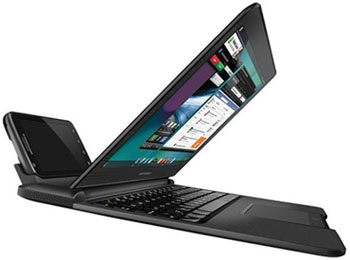
As State of the Union addresses go, Obama’s last week really wasn’t bad — with two exceptions.
He kind of missed the Steve Jobs’ lesson that if you are going to imply magical, what you say should be amazing. Having our “Sputnik moment” be faster trains, more electric cars, and faster Internet was hardly magic, though had it replaced this one in 1930 by Franklin Roosevelt, it would have met that test.
The other part was universal healthcare. This had been rammed through in a way that the opposing party felt was a personal affront, and unless it is replaced, it will likely become the wall preventing much progress over the next two years.
Both showcase the weakness in the current administration as a sacrifice of quality in favor of quantity, but I do think things are improving. One area is in the technology market, and I’d like this week to be my State of the Technology Union column.
After that I’ll end with my product of the week — a product that will either define a new class or end up like similar earlier products: dead on arrival. The Atrix is a huge risk, but so was the first iPhone, and that’s often what creates amazing offerings.
It Was a Very Good Year
Ladies and gentlemen, boys and girls, consumers all — I have great news and sad news to share on the State of the Technology Union address. Overall, technology has advanced sharply, with more amazing new products launched at the Consumer Electronics Show and sold in stores in 2010 than in any other year I can remember.
Technology has moved into transportation in the form of electric bicycles, scooters, motorcycles and automobiles. Even in the soon-to-be-obsolete gas-guzzling cars that most of us drive today, technology has provided hands-free cellphone capabilities, in-car WiFi hotspots, and entertainment systems that rival those in home theaters a few years ago. We are even seeing the very beginning of vehicles that can drive themselves.
Saying a Hopeful Goodbye to Steve Jobs
However, as we look at all of this wonder, we also have to mourn the potential loss of one of our greatest technology leaders, Steve Jobs. We understand he is undergoing an experimental procedure which has had impressive success rates, so he may actually return to the job better than when he left it, but the odds, unfortunately, don’t favor that. If we lose him, his loss will be deeply felt, particularly given the fact that most companies, including Apple, have done a poor job replacing someone like Jobs.
Hopefully Apple, and others, will remember the greatest lesson he taught us. That lesson is that companies need to be reorganized to better conform to the skills of the person running them.
There seemed to be a little of Steve Jobs in President Obama’s State of the Union address, with Obama’s remarks on slimming down and simplifying the executive branch. This is exactly what Steve did to Apple when he took over, and the result was clearly amazingly powerful.
The State of the U.S. vs. State of Tech
Speaking of connections between the U.S. State of the Union last week and tech, one of the greatest leaders that is still with us is Andy Grove. Grove also seemed to be channeled in part of what was said, and it showcases the difference between Yahoo and Google, which dovetails here as well with the Republican’s differences with Obama’s speech.
Andy consistently said you can’t cut out of a problem like the U.S. is going though — you have to invest to correct it. This is because cuts take away your ability to function (unless they are sharply limited to inefficiencies), and the right kind of investment will increase financial success.
You can see this played out in Google and Yahoo. Yahoo is cutting year-over-year to try to cut themselves out of a management problem, and its CEO, Carol Bartz, is currently ranked as the most highly paid underperforming CEO in the world as a result. Google is investing in its future heavily, and while much of that investment has yet to pay off (they too have a bit of a focus problem), that firm is vastly more successful. Apple matches focus with investment, and its CEO was ranked first for the last decade.
Intel last week announced a massive increase in investment in education tied to future development, and other companies like Microsoft continue to invest billions in their own futures. It’s only by doing so that this future can be achieved. And this goes a long way to why we think the State of the Technology Union is so strong.
Financial and Marketing Performance
One of the highlights of last week was Intel’s naming of Will.i.am from the Black Eyed Peas to a functional, though part-time, position as an Intel employee with the title “Director of Creative Innovation.”
This is one of the first real partnerships between those that create media and a firm at the core of the technology that creates it. What makes this unique is that this goes well beyond the vapid spokesperson roles of the past and actually integrates Will.i.am into the process of creating future products and initiatives at Intel. What will result will likely be amazing.
With the exception as noted above for Yahoo, which is continuing to struggle largely due to bad leadership, Google, HP, Oracle, IBM, Microsoft, Intel and even AMD have turned in financial results that surprised the market in a good way. Nokia and AT&T are getting pounded largely by Apple, whose earnings eclipsed everyone else, providing a great send-off for its ailing CEO. All indications are that Verizon is likely to get a huge bump from the iPhone sales starting in February. Overall, the tech market is on fire, and the only bad news isn’t tied to market performance but management under-performance or competitive problems from within the segment, mostly due to Apples’ phenomenal execution.
Wrapping Up: Clouds and Rainbows on the Horizon
Looking ahead short-term Android, appears to be in a lot of trouble due to Google’s inability to successfully defend the intellectual property underneath it. If Android falls, it will take a number of vendors with it. However, iPad 2 and iPhone 5 expectations are increasing, with the former expected to get more aggressive pricing and its own Retina Display, and the latter 4G capability this year, expanding on Verizon’s network strength.
Looking forward long-term, we should be able to visit Mars virtually by the end of the decade — and not just the real Mars, but Edgar Rice Burroughs’ Barsoom, where the women are likely to be a bit more interesting, and even Pandora. (Trust me, the women look better on Barsoom — movie due in 2012).
By 2025, we will have access to something like Gene Roddenberry’s Global Communicator which will blend smartphone, tablet and laptop capability into a single expandable product, and cars will be driving themselves.
The State of the Technology Union is strong and getting stronger. We will do amazing things, and our real Sputnik moment will be the ability to be anyplace in the real or imagined world in the blink of an electronic eye. Real and virtual telepresence is sure to be our near-term, holodeck-like future.
Product of the Week: Motorola Atrix
 IBM came up with a concept in the late 1990s called the “Modular PC,” and I was a huge fan. Unfortunately, it came at a time when IBM was cutting back hard on trying to drive new consumer products because it was experiencing tough financial conditions, and prior efforts had failed badly. Many of us still think it could have redefined computing and taken us on a path vastly different than the one we are now on with smartphones, tablets and PCs, because it was all three. That was then; the Motorola Atrix 4G is now.
IBM came up with a concept in the late 1990s called the “Modular PC,” and I was a huge fan. Unfortunately, it came at a time when IBM was cutting back hard on trying to drive new consumer products because it was experiencing tough financial conditions, and prior efforts had failed badly. Many of us still think it could have redefined computing and taken us on a path vastly different than the one we are now on with smartphones, tablets and PCs, because it was all three. That was then; the Motorola Atrix 4G is now.

In many ways, it mirrors the later IBM concept, which had the core module equipped with a screen and usable as a PDA (this was before smartphones; we were still in the pager years). The Atrix smartphone is the core of this latest modular experience, and you can add a laptop accessory which turns the phone into a smartbook and, I expect, eventually a tablet.
It has a multi-media dock to turn your TV into a smarTV, and an automotive doc to make it an integral part of your in-car entertainment system.
While this product will likely be underpowered at the start, later generations could rival light laptops, and this appears to be a far more interesting solution than the ChromeOS laptop.
Today is actually about “hopey changey” stuff, and the Atrix could be that product that changes our future for the better, and thus it is product of the week.
Rob Enderle is a TechNewsWorld columnist and the principal analyst for the Enderle Group, a consultancy that focuses on personal technology products and trends.





















































